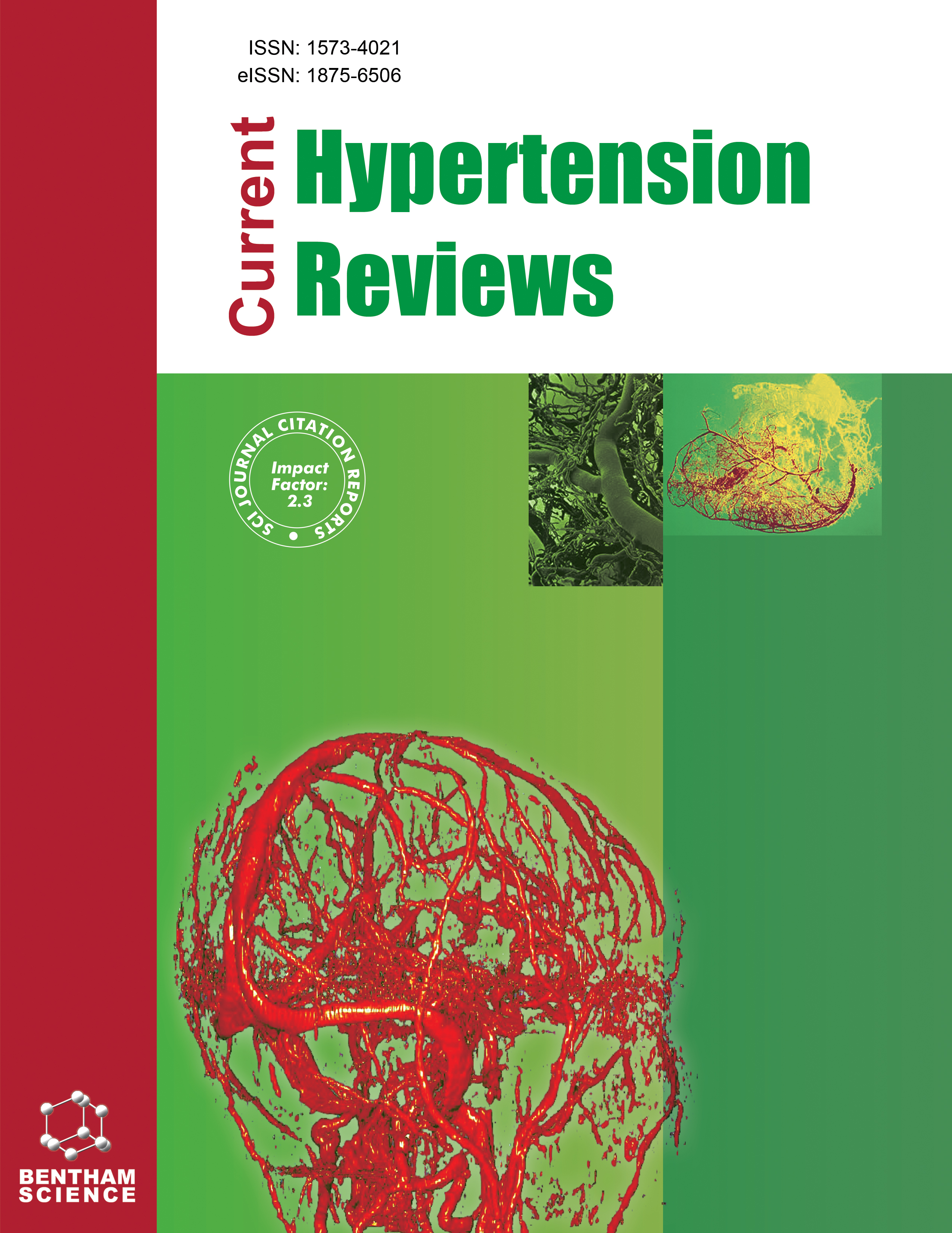- Home
- A-Z Publications
- Current Hypertension Reviews
- Previous Issues
- Volume 4, Issue 2, 2008
Current Hypertension Reviews - Volume 4, Issue 2, 2008
Volume 4, Issue 2, 2008
-
-
Endothelial Microparticles: Mediators or Markers of Endothelial Cell Dysfunction?
More LessMicroparticles are small membrane vesicles released from the plasma membrane into the extracellular space by different cell types both in vivo and in vitro. Formation of microparticles is a part of normal cellular function, but it is increased in many diseases accompanied by endothelial cell dysfunction. This review summarizes the mechanisms of microparticle formation and the role of circulating endothelial microparticles in Read More
-
-
-
Oxidative Stress, Inflammation and Endothelial Biomarkers in Arterial Hypertension
More LessAuthors: Santina Cottone and Giovanni CerasolaThe concept that atherosclerosis is an inflammatory disease is well established. Low-grade inflammation, enhanced oxidant stress and lipid peroxidation have been shown in association with increased cardiovascular risk associated with cardiovascular events. Arterial hypertension represents one of the most common conditions associated with increased cardiovascular risk, including stroke, myocardial infarction an Read More
-
-
-
The Impact of Hypertension in Hemodialysis Patients
More LessAuthors: Riccardo M. Fagugli, Chiara Taglioni, Davide Rossi and Daniela RicciardiAlthough the large majority of patients with end-stage renal disease are hypertensive, blood pressure levels are insufficiently controlled despite the complex pharmacological treatment they receive. Hypertension is known to be associated with cardiovascular complications, but its impact on mortality is still controversial. The paradox of “reverse epidemiology”, i.e. better survival of dialysis patients with high blood pressure lev Read More
-
-
-
Calcific Aortic Valve Disease and Hypertension
More LessAuthors: Harsha Dadlani, Narin Osman, Mandy L. Ballinger, Silvana Marasco and Peter J. LittleThis review addresses the role of hypertension in precipitating Calcific aortic valve disease (CAVD) and the therapeutic potential of anti-hypertensive interventions to ameliorate CAVD. CAVD was originally considered to be a degenerative disease representing the “wear and tear” of the aortic valves. More recently both conceptually and experimentally, CAVD has come to be considered the result of an active disease Read More
-
-
-
Treatment of Atherosclerotic Renovascular Disease
More LessTreatment of atherosclerotic renovascular disease is controversial and revascularization is not a beneficial approach to all patients. Conditions as progressive deterioration of renal function, refractory hypertension or accelerated cardiovascular disease, especially recurrent pulmonary edema, could profit from renal angioplasty with stent placement. Surgical revascularization is a good option for patients who will need concomit Read More
-
-
-
Neurovascular Role of Sympathetic Nervous System and Beta-Adrenoceptor Polymorphisms in Obesity and Hypertension
More LessAuthors: Kazuko Masuo, Gavin W. Lambert, Hiromi Rakugi, Toshio Ogihara and Murray D. EslerObesity, hypertension, and obesity-related hypertension are rapidly growing public health problems. Heightened sympathetic nerve activity is well-established observations in obesity and hypertension. Reduced energy expenditure and resting metabolic rate are predictive of weight gain, and the sympathetic nervous system participates in regulating energy balance through thermogenesis. The thermogenic effects of catechol Read More
-
-
-
Pulmonary Arterial Hypertension in HIV-infected Patients
More LessAuthors: Stefania Cicalini, Pierangelo Chinello, Nicola Petrosillo and Emanuele NicastriIn recent years, much more insight is given to the pathogenic role of HIV and to the clinical manifestations of HIV-related pulmonary hypertension (HRPH), that currently represents one of the most severe events during the HIV disease. HRPH occurs in early and late stages of HIV infection and does not seem to be related to the degree of immune deficiency. Many of the symptoms in HRPH result from right ventricular dysfunctio Read More
-
-
-
Exercise Training-Associated Changes in Arterial Stiffness and Endothelium-Derived Vasoactive Factors
More LessAuthors: Takeshi Otsuki and Seiji MaedaAge- and lifestyle-related arterial stiffening is a well-established independent cardiovascular risk factor. Previous studies have investigated the effects of exercise training on arterial stiffness. Aerobic exercise training reduces arterial stiffness. On the other hand, muscle-strengthening exercise, such as weight training, may stiffen central elastic arteries. However, the mechanism underlying exercise training-associated c Read More
-
Volumes & issues
-
Volume 21 (2025)
-
Volume 20 (2024)
-
Volume 19 (2023)
-
Volume 18 (2022)
-
Volume 17 (2021)
-
Volume 16 (2020)
-
Volume 15 (2019)
-
Volume 14 (2018)
-
Volume 13 (2017)
-
Volume 12 (2016)
-
Volume 11 (2015)
-
Volume 10 (2014)
-
Volume 9 (2013)
-
Volume 8 (2012)
-
Volume 7 (2011)
-
Volume 6 (2010)
-
Volume 5 (2009)
-
Volume 4 (2008)
-
Volume 3 (2007)
-
Volume 2 (2006)
-
Volume 1 (2005)
Most Read This Month
Article
content/journals/chyr
Journal
10
5
false
en


